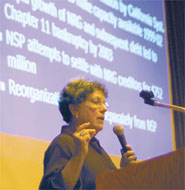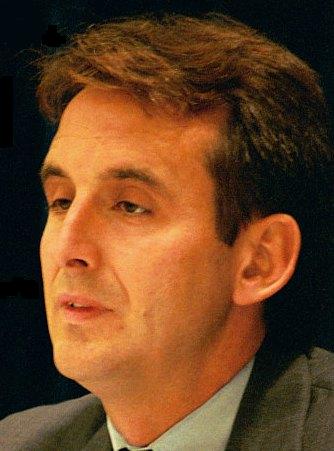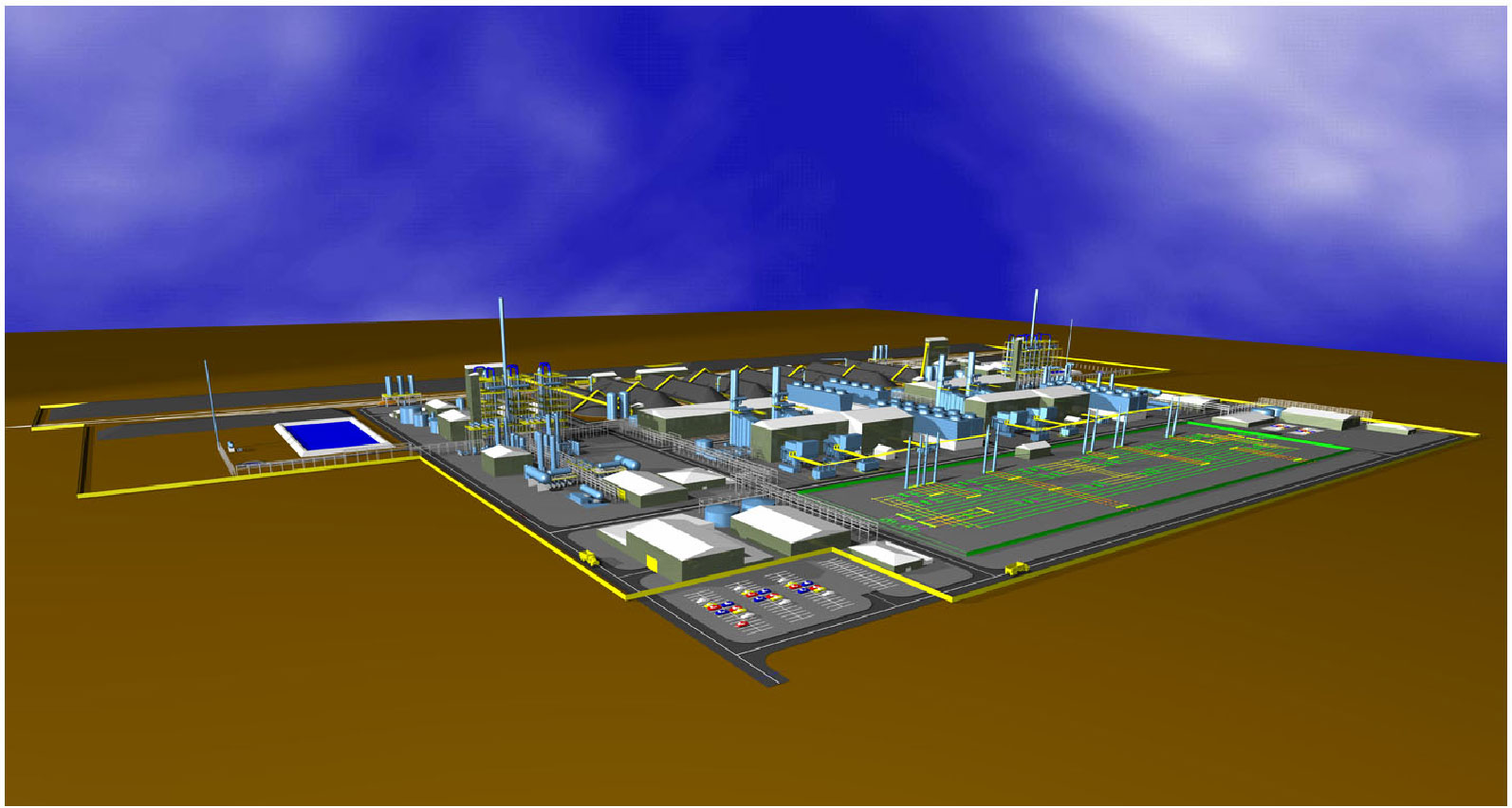CAMP presentation last Tuesday
December 19th, 2006

Mesaba Energy public hearings are this week
Residents get opportunity to comment on proposed power purchase agreement
Than Tibbetts
Grand Rapids Herald-Review
Monday, December 18th, 2006 12:18:54 PM
——————–
Charlotte Neigh, co-chair of Citizens Against the Mesaba Project speaks at ICC on Tuesday during CAMPâ??s informational presentation.
Members of the public have one more chance to offer comments at a hearing that will help determine whether Excelsior Energy has a customer for the power its Mesaba Energy Project might someday produce.
Excelsior Energy is seeking to build a $2 billion power plant north of Taconite that would use a relatively unproven technology to produce lower emissions than a traditional coal-fired plant.
The technology, integrated gasification combined cycle, or IGCC, works by converting coal into a synthetic gas, which can then be cleaned of potential pollutants before it is burned. Most emissions control technologies today work by removed pollutants after the fuel is burned.
While Excelsior claims that its IGCC-powered plant would offer significantly reduced emissions than a traditional coal-fired power plant, opponents say the potential benefits would not outweigh the financial and environmental costs of the project.
State laws passed in 2003 gave Excelsior the right to a power purchase agreement with Xcel Energy if a couple of conditions were met. The public hearings being held in Hoyt Lakes on Dec. 19 and Taconite on Dec. 20 will allow the public to comment on record whether the project would be in the public interest and whether the Mesaba project would likely be a â??least cost resource.â? Sessions are being held at 1 p.m. and 5 p.m. at both locations.
Here is a brief look at the Mesaba Energy Project and some of the issues surrounding the power purchase agreement.
Excelsior Energy was founded by the husband-and-wife team of Thomas Micheletti and Julie Jorgensen. After originally proposing a power plant on the former LTV steel site in Hoyt Lakes, Excelsior choose the Taconite site as its â??preferredâ? site. The project would be built in two phases, each capable of producing approximately 600 megawatts of power. The Mesaba project would be the largest implementation of an IGCC power plant.
Excelsior has received several boosts from legislative action. In 2003, it was given the definition of an â??innovative energy projectâ? and exempted from a certificate of need, a process that would usually be carried out before the Minnesota Public Utilities Commission as to whether the power produced was need in the state. Without trudging into too much detail, a deal was made that would allow Excelsior to have its provisions in exchange for allowing Xcel Energy to store spent nuclear fuel at its Prairie Island nuclear power plant. (Ironically, Xcel Energy has now taken a position against Excelsior Energy in the current proceedings before the commission.)
Excelsior has also benefited from $9.5 million in convertible loans from Iron Range Resources, $36 million from a Department of Energy initiative and $800 million in loan guarantees from the federal government.
At the hearings this week, several key factors will likely receive attention.
Economic benefits:
Construction of the power plant would require approximately 1,000 full-time equivalent jobs, according to Excelsior. Approximately 100 jobs would be required to operate Phase 1 of the plant when it was completed. In addition, many more indirect jobs and economic activity would be created in order to offer services to the plant and its new employees.
Opponents of the project concede that no matter what, the project will have some positive economic benefits to the region. But, they contend, the cost of those jobs to the environment and possibly to the rest of the state would outweigh any potential benefits. Xcel Energy has said it expects its ratepayers to seen substantial increases if Xcel is forced to purchase power from Excelsior.
The environment:
Excelsior Energy officials have said that the IGCC process will result in the Mesaba Energy Project being the cleanest coal-fired power plant in the world. Department of Energy officials have said they believe IGCC is the next step forward toward a goal of a zero-emissions coal-fired power plant. Excelsior officials tout the Mesaba project as being â??capture ready.â? In other words, it will have a capability to install technology needed to capture carbon dioxide, a greenhouse gas and a likely target for regulation in the near future.
Regardless of potentially lower emissions, opponents have said, building a power plant will produce more emissions that if one was never built. The addition of mercury to the environment could further increase concentrations of the toxic metal in fish, which could affect tourism in the area. Opponents of the project have also said that the cost of capturing carbon dioxide would be too expensive, possibly to the point of prohibiting the projectâ??s construction at the outset.
Infrastructure:
Excelsior touts the Taconite site as being in the immediate proximity of transmission lines, rail lines and major roadways. Itasca County has committed about $55 million to the infrastructure related to the project. The proximity will give the Mesaba project a competitive advantage, Excelsior officials have said.
Opponents say the burden on the public is already too great. Because Excelsior is seeking to sell the power to Xcel Energy in the Twin Cities, transmission lines will need to be built and substations will have to be upgraded.
Whether for good or for worse, the Mesaba project has certainly driven debate in and around Itasca County.
For more information about the Mesaba Energy Project or coal gasification technology:
www.excelsiorenergy.com
www.gasification.org
For more information from opponents to the project:
www.camp-site.info
www.legalectric.org
Public hearings:
St. Paul:
Monday, Dec. 18
Time: 1 p.m. and 6 p.m.
Metro Square Building,
Third Floor, Large
Heaing Room
121 – 7th Place East
St. Paul, MinnesotaHoyt Lakes:
Tuesday, December 19th,
Time: 1 p.m. and 5 p.m.
Hoyt Lakes Arena
102 Kennedy Memorial Drive
Hoyt Lakes, MinnesotaTaconite:
Wednesday, Dec. 20
Time: 1 p.m. and 5 p.m.
Taconite Community Center
26 Haynes Street
Taconite, Minnesota
StPPP report on hearing
December 19th, 2006
Iron Range plant fought
Xcel leads foes of coal gasificationBY LESLIE BROOKS SUZUKAMO
Pioneer PressA power plant proposed for northern Minnesota would raise electricity rates by 8 percent to 12 percent for customers of Xcel Energy if it is allowed to be built, an Xcel official testified at a hearing of the state Public Utilities Commission on Monday.
The hearing was the opening of three days of public testimony this week on whether the PUC should require Xcel Energy to buy electricity from Excelsior Energy, which has proposed a $2.1 billion coal-gasification plant on the Iron Range just north of Taconite, Minn.
The commission is expected to make a decision in the spring. The energy produced would be used primarily in the Twin Cities area.
Opponents of the plant, which include Minneapolis-based Xcel, told two administrative law judges Monday that the power from the plant isn’t needed, that it would load too much financial risk onto the backs of the public and that the plant’s emissions of carbon dioxide would contribute to global warming.
But the president of the state’s building-trades workers urged the judges to support the plant because it will produce well-paid construction jobs.
Xcel Energy believes that if it is forced to buy the 600 megawatts of power the Excelsior Energy plant is expected to generate by 2011, it will have to raise rates by between 8 percent and 12 percent to pay for the additional power, the utility company’s assistant general counsel, Chris Clark, said.
The Excelsior plant would use a new technology of chemically converting coal into a gas before burning it, a cleaner way to make electricity. But it is more expensive to produce.
Coal gasification, as it is called, has never been attempted on a large scale. Xcel plans instead to use wind and hydropower to meet its rising energy needs by 2015.
The price tag for coal gasification struck a nerve with most of the Xcel customers and shareholders who testified.
“I don’t like making them buy power they don’t need,” said Barbara Parnell, an Xcel stockholder from White Bear Lake.
Others, like Ron Gustafson and Linda Castagneri, contended the public will be saddled with most of the risk should the plant fail. The St. Paul couple own retirement property in Bovey, Minn., near the proposed plant.
“What is the cost of this high-risk demonstration project if it fails?” Castagneri asked, noting that transmission lines need to be built, too. “What is the cost of building infrastructure to nowhere?”
Environmentalists complained Excelsior’s coal-gasification proposal also does not take advantage of the technology’s ability to trap and store the carbon dioxide emissions that contribute to global warming. But Excelsior’s general counsel, Thomas Osterass, said that the plant still beats conventional coal plants with lower emissions of sulfur, mercury and coal particulates and that it has the flexibility to trap carbon dioxide later when the technology improves.
The Minnesota Building and Construction Trades Council, representing 70,000 members, supported the project because it represented “a lot of work and a lot of opportunity,” said its president, Dick Angfang.
More public testimony is expected today and Wednesday in Hoyt Lakes, Minn., and Taconite, Minn.
Leslie Brooks Suzukamo covers telecommunications, technology and energy and can be reached at lsuzukamo@pioneerpress.com or 651-228-5475.
© 2006 St. Paul Pioneer Press and wire service sources. All Rights Reserved.
Mesaba IGCC Public Hearings on NOW!
December 18th, 2006
It’s time for the public hearings on Excelsior’s Mesaba coal gasification project, and it’s tired out and tomorrow is Hoyt Lakes. Don’t expect much for awhile! But one interesting tidbit:

John Derus was testifying for Excelsior, and introduced himself implying he was speaking for the Metro Counties Energy Task Force, waxing on and on in a way that lent apparent authority, but it didn’t feel right, and when he was finished, I asked him specifically if he was representing them, oh my, somebody who’s a lobbyist should know better than to respond like that!  It took a while, but finally it was clear he was NOT speaking for them.. sigh… and he’s got his hat in the ring for U of M Regent…
Pawlenty on Excelsior’s Mesaba Project
December 17th, 2006
Will someone please explain to me how this quote about the Mesaba coal gasification (IGCC) project doesn’t prove that it’s not what they say it is? That it’s NOT the be all and end all of emissions! Must be a boy thing…
Here’s what he said, really:
“…the project may have to be grandfathered in in some form on the emissions in the future so there would be a net zero or net gain.”

Photo stolen from the DFL site — well, I guess they’re good for something — they must have really worked for this one! He’s kinda got that Tom Dunnwald look…
HEY EVERYBODY — LISTEN UP! THE GOV’S STUMPING FOR EXCELSIOR AGAIN, AND HE’S WANTING TO GIVE EVEN MORE AWAY!
Let’s shine the sun on this! And I’m worried that the DFLers and enviros won’t know anybetter than to give them more, everyone join in, people all over the state, join hands, it’s a love train… oh, barf… It’ll go like this, “How can we pass CO2 legislation that’s as ineffective as possible, something that’s not too bad and so we won’t get screwed too bad? Let me think… how ’bout “Cap & TRADE” yeah, that’s it, TRADE, we can just shift it around and let only the ones with the deep pockets pollute… oh, I forgot, they’re the major offenders already… oh well, at least it will look like we’re doing something. And those who’ve commodified CO2 will come out like bandits. Maybe we can get some…” right… what a load o’ bull…
PUH-LEEEZE, Just CAP, or if you must, CAP & TAX… oh, wait, CAP & FEE! Yeah, that’s it, CAP & FEE!
Anyway, here’s the Gov:
Bill Hanna
Mesabi Daily NewsSaturday, December 16th, 2006 09:27:46 PM
ST. PAUL â?? Gov. Tim Pawlenty wants a much more aggressive, more â??greenâ? energy policy for Minnesota. He wants the state to tap into renewable sources for 25 percent of all its energy use by the year 2025.
He outlined that policy change in a speech on Tuesday and then carried the message to a legislative forum with reporters at the State Capitol. The message was clear: More renewables, a lower level of emissions harmful to the environment and â??significantâ? penalties for utilities that do not conform.
So what would that mean for the proposed Excelsior Energy coal gasification project for the Iron Range, Pawlenty was asked.
â??Iâ??ve been supportive of the project and still am. But the project may have to be grandfathered in in some form on the emissions in the future so there would be a net zero or net gain,â? the governor said.
State Sen. David Tomassoni, DFL-Chisholm, was pleased to hear of the continued support
â??Iâ??m hoping he will remain supportive and we wonâ??t have to do something grandiose for the project,â? he said.
Tomassoni said that the coal gasification technology is crucial to the stateâ??s overall long-term energy policy.
â??Renewables are certainly going to be an important supplement to our energy needs. But itâ??s unrealistic to try to completely get away from coal-based sources. We have to look at alternative technologies for clean-coal sources. And this (coal gasification) is it,â? he said.
Tom Micheletti, co-president and CEO Excelsior Energy, said the proposed coal gasification project is the right fit for any energy policy seeking cleaner utilities.
â??The technology weâ??ll use will reduce emissions dramatically compared to other coal-fired plants and remove virtually all mercury for the coal,â? he said.
The Excelsior Energy Web site states that the new technology will reduce emissions by two-thirds compared to the next cleanest coal technology.
Excelsior wants to build six units on the Iron Range, with the first one slated for construction beginning in 2008 and to be online in the Bovey/Taconite area of Itasca County in 2011. It is projected to create 105 to 110 permanent jobs, with construction jobs peaking at 1,200 to 1,400.
The total anticipated cost of the first unit is â??about $2 billion,â? according to Micheletti. The cost had previously been reported as $1.2 billion, a figure also provided by Micheletti. But he said the $1.2 billion was the initial cost figure and has since been increased to â??about $2 billionâ? to factor in financing, permitting and other preliminary costs of the project.
However, a Red Wing, Minn., attorney for Public Utilities Commission intervenor and opponent mncoalgasplant.com., sees the Excelsior initiativeâ??s price tag quite differently.
â??The cost of this project has been escalating, and last May, Excelsiorâ??s DOE (Department of Energy) agreement reported the cost at $2,155,680,783, which doesn’t include ancillary services, transmission network system upgrades and infrastructure costs paid by the county, cities or others. The ultimate cost will be much higher,â? said Carol Overland.
She also doesnâ??t grasp Pawlentyâ??s backing of the project.
â??I donâ??t understand the governorâ??s support. Mesaba (which the project is also known as) doesnâ??t fit the plan for renewables, conservation and aggressive reduction of CO2 because itâ??s fueled by coal and requires constructing a plant and buying electricity that Xcelâ??s customers donâ??t need,â? she said.
Cows and more hot air
December 15th, 2006

 Stolen from piece about tax on belching and farting…
Got beans? As if bovine BSE wasn’t enoughm here they are, trotting this out again:
A big source of greenhouse gas? It’s the cows
And here’s more hot air, Overland in the Beagle, with a threat that if I hear of one more presentation on global warming that isn’t working to shut down some big-ass coal plant, I’ll… I’ll… I’ll:

(and the 720 tons per hour is corrected to 616! Yes, of course, I’ve notified Anne Jacobsen of the Beagle.)
Carol Overland, Red Wing
The Republican Eagle – 12/14/2006
To the Editor:Global warming is a well-known scientific and policy issue, acknowledged in the political debates of this past election season. But the magnitude of greenhouse gas on our lives and future generations may well depend on our ability to act now. Enough of this talk that generates more CO2. Letâ??s get to work!
Itâ??s a daunting task. What can we do? We start with our own behavior, our own choices. Changing light bulbs is a simple way to make a difference. Dakota Electricâ??s program has decreased CO2 emissions by almost 35,000 pounds, toward a goal of more than 110 tons.
I live modestly, but even though I eliminated my commute to Northfield, Minn., my CO2 generation is high because I drive 35,000 miles annually for work. According to http://www.mncee.orgâ??s calculator, I generate 20 tons of CO2 annually. An easy and concrete way to do our part is to calculate and commit to reducing our own CO2 â?? join the Energy Challenge.
Utilities say we need 6,300 megawatts of generation in the region by 2020. Thereâ??s 12,817 MW planned in Minnesota alone, and over 27,000 MW in Minnesota and the Dakotas. Of that, 8,300 MW is coal, 4,000 MW is gas, and 14,000 MW is wind. Weâ??re in the position of being able to make choices that generate less CO2 â?? important where a power plantâ??s life is over 50 years.
The proposed 600MW Mesaba coal gasification plant will emit 616 tons of CO2 per hour or 5,396,160 tons of CO2 annually. The new Big Stone plant is about the same. If I cut my personal CO2 by 25 percent, 5 tons annually, itâ??ll take 1,261,440 years to mitigate one year of typical coal plant CO2 production. The best way to limit CO2 is to assure that these new plants are not built.
How can we do it differently? We can follow the utilitiesâ?? example by combining generation that emits less CO2. Xcel plans to meet its 2015 baseload power need by combining wind and hydro. GRE is siting wind near the Lakefield Junction gas plant and utilizing transmission. Serving customer load demands that electricity be there when we want it, and utilities are demonstrating that these types of combinations work. We can require new generation be combinations of intermittent and renewable sources that donâ??t worsen global warming.
Nowâ??s the time to take responsibility to cut CO2 generation. Letâ??s show our friends, neighbors, employers, elected officials and our own utility that weâ??re committed to decrease CO2 emissions.
Carol A. Overland
Red Wing
